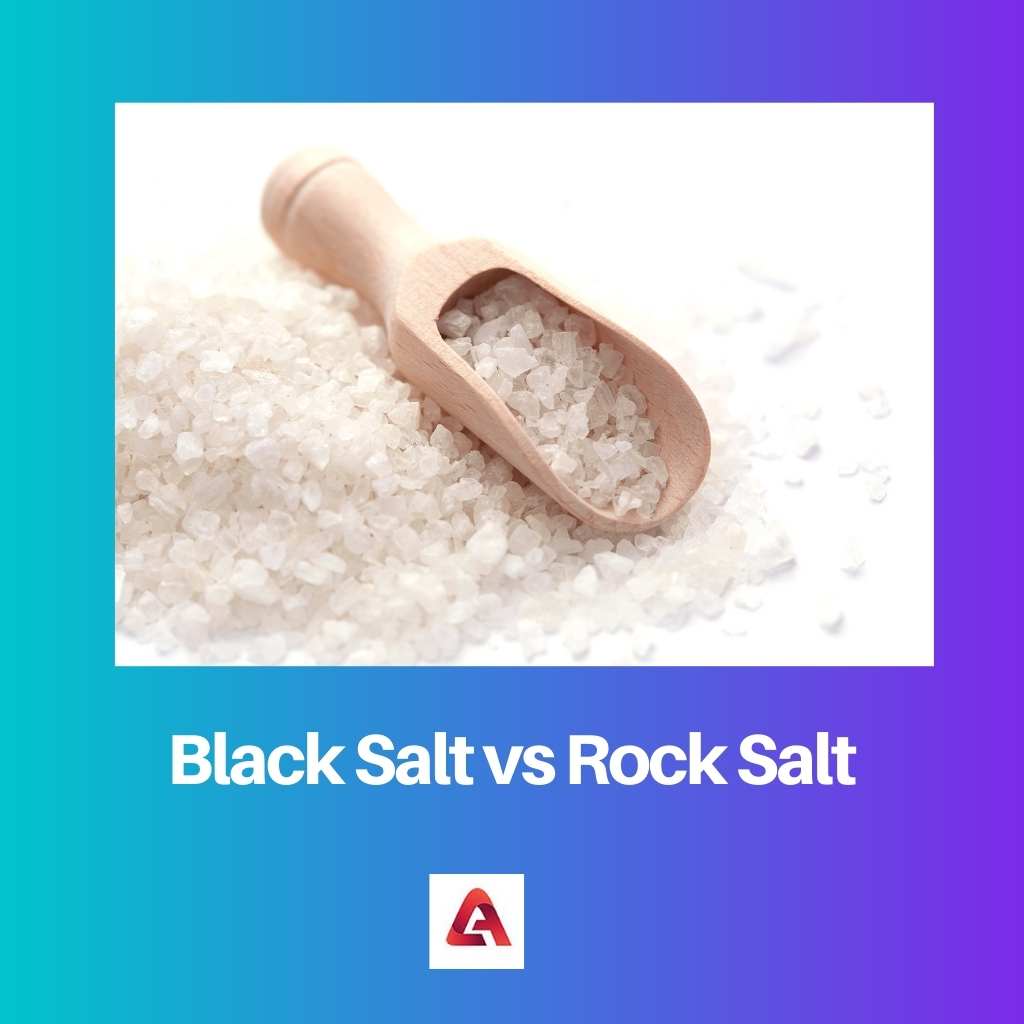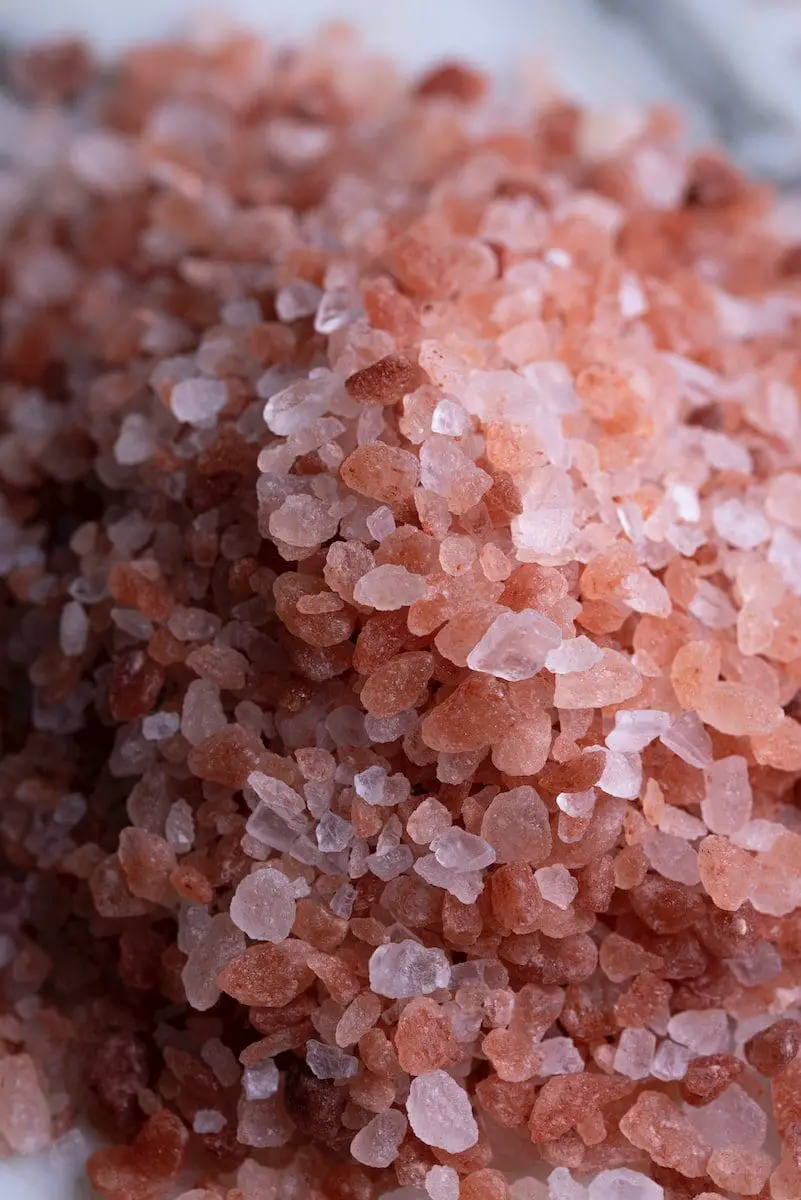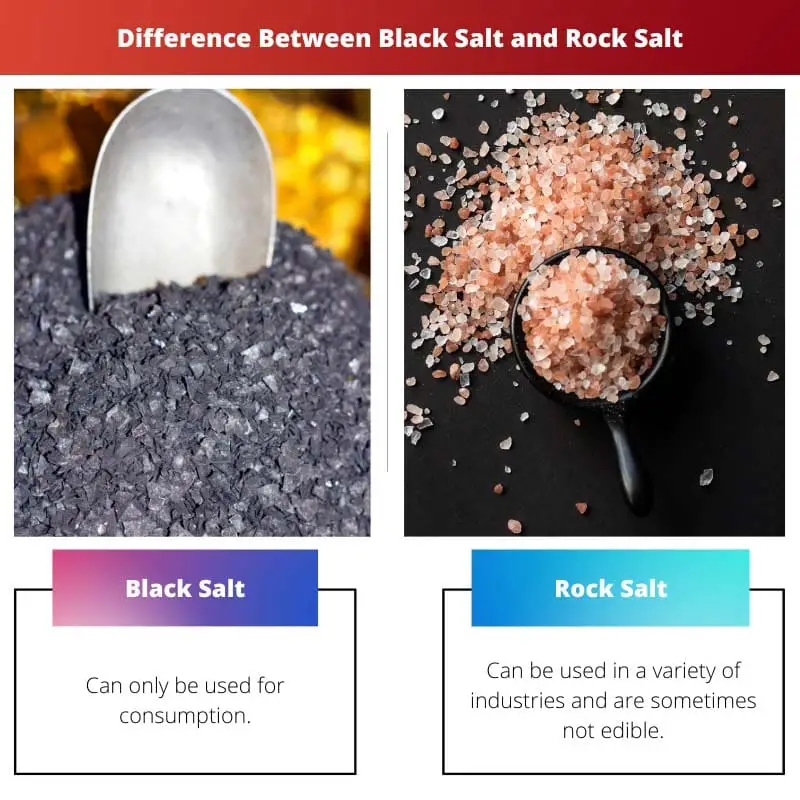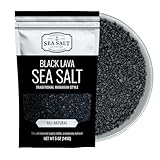Black salt and rock salt are two different types of common salt that are found all over the world and have some distinct characteristics.
Consuming too much salt is never good for your health, but these salts do have some properties which might be beneficial for humans. Black salt and rock salt, both have their advantages as well as disadvantages.
Key Takeaways
- Black salt has a strong sulfurous aroma and taste, while rock salt is less intense with a more neutral flavor.
- Black salt is used in Indian and Asian cuisines for its unique taste, whereas rock salt is used in various cooking applications worldwide.
- Black salt is rich in trace minerals and has potential health benefits, while rock salt is primarily sodium chloride with fewer trace minerals.
Black Salt vs Rock Salt
Black salt, also known as Kala Namak, is a type of volcanic rock salt that has a distinctive sulfurous taste and smell, used to add flavor to chutneys, salads, and chaats. Rock salt is a type of salt that is mined from salt mines and is used as a preservative in various cuisines.

Black salt also recognized as Himalayan black salt, kala namak, or Indian black salt, is a basaltic lava salt produced in the Himalayan range.
A black salt is a form of rock salt that is used in South Asia as a briny and pungent-smelling flavoring. It is a popular ingredient that is commonly recognized as bit laban in Bangladesh. It is used to enhance the flavor of food.
Sendha namak, or rock salt, is used in Ayurvedic medicine for centuries. While the study on most of these advantages is limited, rock salts provide essential minerals and may aid in the treatment of sinus infections and reduced salt levels.
You cannot use it as a flavoring agent unless it is labeled as edible. Rock salt contains contaminants, primarily minerals, that are eliminated from the salt we utilize in our daily cooking.
Comparison Table
| Parameters of Comparison | Black Salt | Rock Salt |
|---|---|---|
| Uses | Can only be used for consumption. | Can be used in a variety of industries and are sometimes not edible. |
| Origin | Comes mostly from salt mines. | Comes mostly from salty lakes or seas. |
| Color | Dark pink in color. | Is colorless or white. |
| Components | Sodium chloride, ferric sulfate, sodium bisulfate, and sodium sulfate mixture. | Sodium chloride. |
| Shape | A pyramid-like shape. | Crystals with large, beefy size. |
What is Black Salt?
The color of Indian black salt varies; some might even not be black at all. It comes in a variety of colors ranging from brownish pink to murky violet and is accessible in whole clumps or powdered shapes.
If you go to a culinary store, you will notice that there are several types of black salt.
You should be aware of two other kinds of black salt: black ritual salt as well as black lava salt. Such black salts are not the same as the umami-rich, flavor-enhancing Himalayan black salt and can be used for entirely different reasons.
Black salt is utilized as a food additive in several Indian and Asian recipes.
Indian kala namak is used in a variety of dishes, including pickles, side dishes, chutneys, raitas, as well as fruit appetizers. Black salt contains less sodium than regular table salt.
While sodium is an important component of a healthful diet and plays an important role in our cells, most Westerners consume far too much sodium via packaged foods, which leads to high pulse rates and other troubles.
Black salt may play a minor role in tackling this issue.
Because black salt is not oxidized like regular table salt, you would then require iodine from fresh fish or other alternatives to avert goiters as well as other health problems associated with iodine inadequacies.
What is Rock Salt?
Rock salt, also recognized as halite, is a sort of salt that forms from the remains of primitive bodies of water in the bumpy strands of the Earth’s mantle.
The majority of the salt we utilize in preparing food, both table salt as well as Kosher salt, is produced by swamping buried salt deposits with surface water, retrieving the water, and then dissipating it to exit behind pure rock salt.
Hydrolyzing the salt from seawater yields a smaller percentage known as sea salt. Rock salt, on the other hand, is extracted directly from the earth, retaining its cube-shaped crystalline phase.
Some types of food-grade rock salt could be used to make brines, as well as for other purposes. Creating ice cream is among the most prevalent culinary applications for rock salt.
Ice cream is created by incorporating milk, cream, sweetener, and other flavoring additives, then chilling it using a rousing and cool technique.
Aside from culinary applications, you could also insert rock salt into the ice in your cooling system to help it stay solid longer by reducing the thermal properties.
Another application is as a water stabilizer. Of course, rock salt is frequently used to dissolve ice on streets and sidewalks.
Rock salt can be purchased in cartons or bags varying from 4 pounds to 50 pounds at equipment stores and supermarket stores. As long as you maintain it dry, rock salt could be stashed endlessly.

| # | Preview | Product | |
|---|---|---|---|
| 1 |

| Morton Ice Cream Salt, Rock Salt, 4 Pound, Tub (Pack of 4) | Check Price on Amazon |
| 2 |

| Pro-Cure Rock Salt Bulk In Poly Bag 4 Lb | Check Price on Amazon |
Main Differences Between Black Salt and Rock Salt
- Black salt is a salt whose primary usage is only for consumption by humans whereas rock salt is utilized for a lot of other reasons and cannot be consumed unless it is classified as edible.
- Black salt mostly comes from salt mines in the Himalayan region whereas rock salt mostly comes from salty lakes or seas.
- The primary color for black salt before processing is dark pink whereas the primary color for rock salt can range from colorless to white.
- Black salt is a mixture of sodium chloride, sodium sulfate, sodium bisulfate, and ferric sulfate whereas rock salt primarily consists of just sodium chloride.
- The shape of an unprocessed black salt is that of a pyramid whereas the shape of rock salt is like crystals that are large and chunky.






